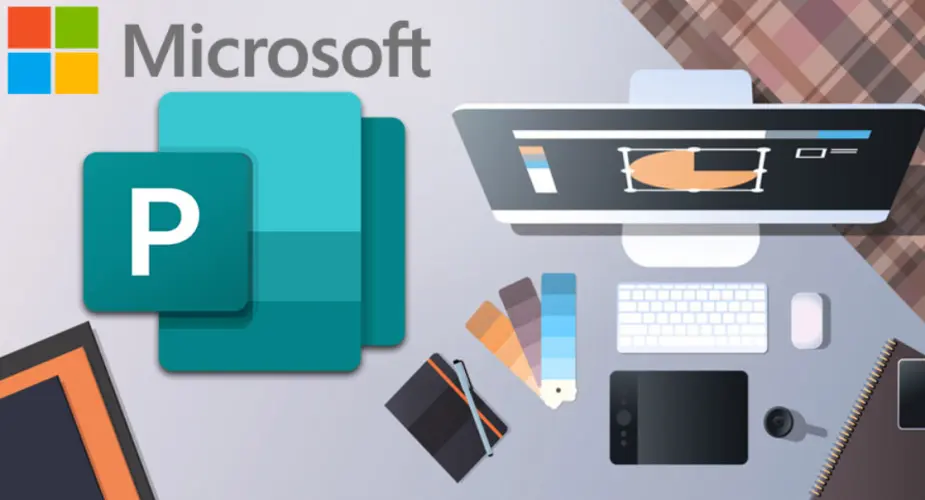Microsoft Publisher is a versatile desktop publishing program that lets users create attractive documents that can be printed and used for digital distribution. When you’re creating brochures, newsletters or flyers or business cards improving those Microsoft Publisher documents is crucial to achieve competent outcome and to assure efficiency. Here are some strategies to optimize documents in Microsoft Publisher documents.
Choose the Right Template
Selecting the appropriate Template is the very first stage towards improving the quality of your Publisher document. Microsoft Publisher offers a variety of templates designed for various kinds of projects. Picking a template that to your project’s needs will save you time and focus on providing a solid foundation for design.
Use Built-in Templates: The templates included in Publisher were designed so that they can be flexible and re-usable. Browse through the categories available and pick one that fits with your specific project.
Online Templates: If you’re unable to locate an appropriate template for your needs in Publisher then you can download additional template templates through Microsoft’s repository online, or other templates websites.
Plan Your Layout
The layout you plan prior to beginning designing is vital to ensure an attractive and well-organized document. Take note of the following layout guidelines:
Grid and Guides: Utilize the grid or guides function to ensure that the elements are aligned in a consistent manner. This ensures an orderly and competent appearance.
Margins and Bleeds: Make sure you have the proper margins and bleeding in order to warrant the material is correctly spaced and that there are no problems when printing.
Master Pages: Create master pages that provide an organized layout for repeating elements like headers logos, and footers.
Optimize Images and Graphics

Graphics and images can greatly improve the visual appeal of your document However, they could also boost the size of your document and impact performance if they are not optimized correctly.
Resolution: Utilize High-resolution photos (300 DPI) for print documents to warrant clarity and clarity. For digital documents 72 DPI is typically sufficient.
Compression: Reduce the size of images by compressing them to reduce their size, but without sacrificing quality. Publisher provides tools for compressing images automatically.
Formats: Choose the appropriate image format.JPEG works appropriate for photos, but PNG is more appropriate for images with transparent backgrounds.
Use Consistent Branding
Maintaining a consistent branding across your document is essential to warrant a skillful presentation and branding recognition.
Color Schemes: Utilize your company’s color scheme regularly. Publisher lets you save color schemes and apply them throughout your document.
Fonts: Choose fonts that are a reflection of your brand’s style and personality. Make sure to use only one or two fonts to create a unified style.
Logos and Watermarks: Add your logo, and in the event of a need add a watermark to each page. Utilize Master Page feature in order to include these elements quickly.
Efficient Text Handling
The way you handle text can make a the difference in the readability of your document and its overall appearance.
Text Styles: Utilize text styles to ensure the sameness of text. Set the different styles to describe headings and subheadings captions, body text and more.
Alignment and Spacing: Check that text is properly aligned and ensure that text is properly spaced and aligned. Make use of Publisher’s tools for text alignment to actually achieve an elegant layout.
Columns: Split text into columns where it is necessary for increase readability and to make the document appear more well-organized.
Incorporate Interactive Elements
For digital documents, incorporating interactive elements can enhance user engagement.
Hyperlinks: Incorporate hyperlinks into text or images to guide users towards more information or other resources.
Navigation: Create the table of contents or a navigation panel to benefit users locate particular sections.
Multimedia: Include audio or video clips, if appropriate and warrant they are properly incorporated in the document.
Proofreading and Review
Before you finalize your document thorough proofreading and revision is essential to warrant professionality and accuracy.
Spell Check: Make use of Publisher’s spell check tool to spot and correct spelling mistakes.
Grammar Check: Review the document carefully to check for spelling and grammar mistakes.
Peer Review: If you can it is possible, ask someone else to examine your document to spot mistakes you may have missed.
Prepare for Printing
If you are planning to use your document for printing, the correct preparation is essential to assure high-quality output.
Print Preview: Always make use of your print preview function to check the way your document will appear when printed. This can benefit you identify any layout problems.
CMYK Color Mode: Convert your document’s colors into CMYK mode If your printer needs it. Publisher lets you adjust the color settings to match.
Paper Size and Type: Select the appropriate size of paper and the appropriate type according to the requirements of your document. Make sure that the settings for your document correspond to the specifications of the printer.
Optimize for Digital Distribution
For documents that are intended to be distributed digitally like PDFs or digital publications extra adjustments are required.
File Format: Save your document in the correct format for your file. PDF is extensively used due to its compatibility, as well as the preservation of formatting.
Compression: Maximize the size of your files by compressing images and eliminating unnecessary elements.
Accessibility: Make sure that your document is searchable by including alt text in photographs and structuring material by using the use of headings, tags and.
Utilize Publisher Tools and Features
Microsoft Publisher offers a range of features and tools to simplify your workflow and improve your document.
Design Checker: Make use of The Design Checker tool to identify possible issues and get suggestions on how to improve.
Catalog Merge: To create directories, catalogs or mail merges, use Publisher’s catalog merge feature to streamline the process.
Building Blocks: Reduce time and effort through together Builder blocks from Publisher which include pre-designed elements, such as banners border, accents and borders.
Maintain File Organization
Maintaining your files in order is crucial for effective workflow and ease of access.
Folder Structure: Create a simple folder structure for your Microsoft Publisher documents as well as related documents. Make sure to use descriptive names and subfolders.
Version Control: Make backups of different copies of your documents each time you make major modifications. This will benefit you track your changes and then reverting back to earlier versions when needed.
Backup: Always back up your files to avoid losing your data. Make use of Cloud storage, or drive externally to provide more security.
Learn and Improve
Continuous improvement and learning is essential for learning to master Microsoft Publisher and producing high-quality documents.
Tutorials and Guides: Learn Online tutorials online and guidebooks for a better understanding of new features and techniques in Publisher.
User Forums: Join user forums and community forums to ask for suggestions, exchange information and keep up-to-date on accurate methods.
Experimentation: Don’t be afraid of experimenting with various designs and methods. Training helps you improve your knowledge and revealing new possibilities.
Conclusion
Enhancing the quality of Your Microsoft Publisher documents involves a combination of selecting the appropriate tools, using excellent methods, and continuously improving your process. If you follow these guidelines to create professional attractive, visual documents which will meet your needs precisely whether printed or distribution via digital. Remember that the main ingredient to success is the planning consistent, congruity, and focus on the details. Happy publishing!
